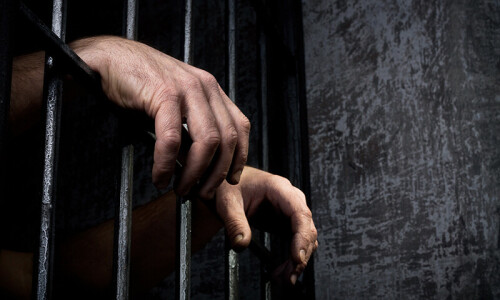The Mankiala Stupa is located around 35 kilometres from Islamabad in the village of Mankiala near the G.T. Road. Mankiala is a union council of the Gujar Khan sub-district of Rawalpindi and well-known for the ancient stupa.
According to historians, Mankiala Stupa dates back to the Gandhara period, and there are several tales associated with it. One of the most fascinating tales about Mankiala Stupa is that Buddha sacrificed some of his body parts at this place to feed hungry tiger cubs.
Later, a stupa was built there as a memorial. According to the British Library, Mankiala Stupa was built during the period of Kanishka (128-151 AD) and first discovered by British traveler Mountstuart Elphinstone on his way towards Afghanistan in 1908. He also wrote a detailed account of his travels and mentioned this stupa in his memoir “Kingdom of Caubul” in 1815.
After its rediscovery, it was restored by the British rulers in 1891. There is another narrative about Mankiala Stupa. According to some historians, it was actually King Ashoka, the son of Bindusara and grandson of Chandra Gupt Mauria, who decided to embrace Buddhism as a religion after the Kalinga war in 261 BC as he was fed up with the bloodshed.
Later, he announced Buddhism as the state religion. He also passed an order that the remains of Buddha in Kapilvastu, Nepal, be cremated, and the ashes placed in 84 different boxes of gold or silver. These boxes were then buried in 84 different places in India from Patliputra to Kandahar and stupas were constructed there in a round mound form, having seven umbrellas over them - a sacred sign in Buddhism depicting seven heavens, seven skies, seven earths, seven skin layers, seven colours and seven musical notes.
According to some researchers, Mankiala Stupa is one of those 84 stupas. Today, the Mankiala Stupa seems like an abandoned place. An iron grill has been erected around the area to protect the stupa. Tourists, especially Buddhists from different countries, often visit the place.
The stupa is in a bad shape due to negligence and desperately needs some restoration work. Wild grass has grown on the stupa while the stone blocks of its base remain broken. The relics deposited in the stupa were found by Jean-Baptiste Ventura in 1830. But all these items are now in the British Museum, London.
Published in Dawn, October 26th, 2014














































